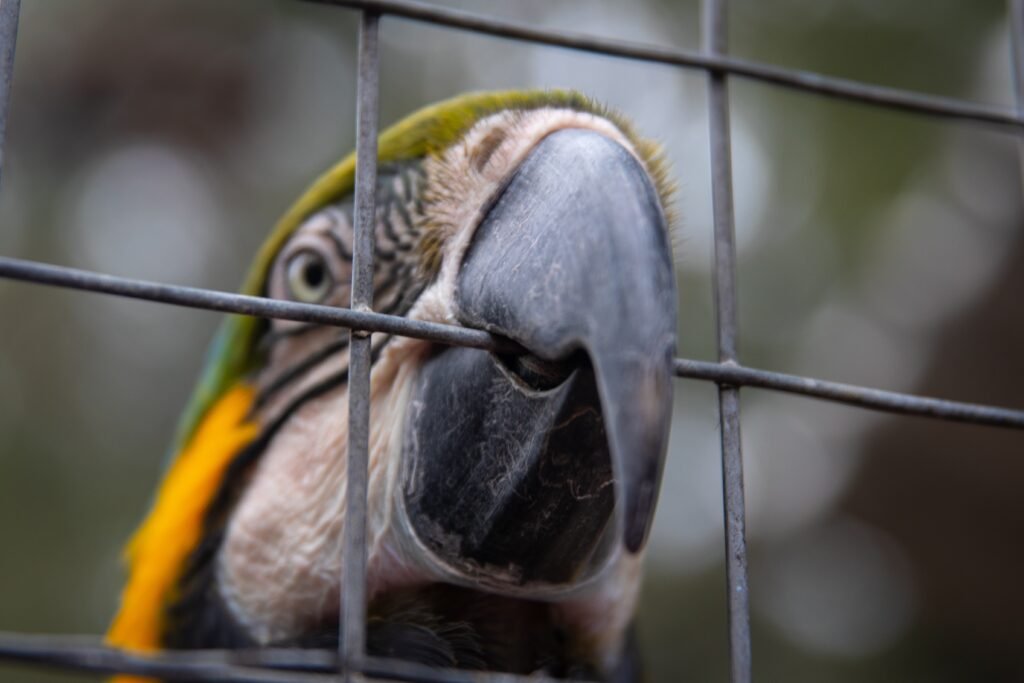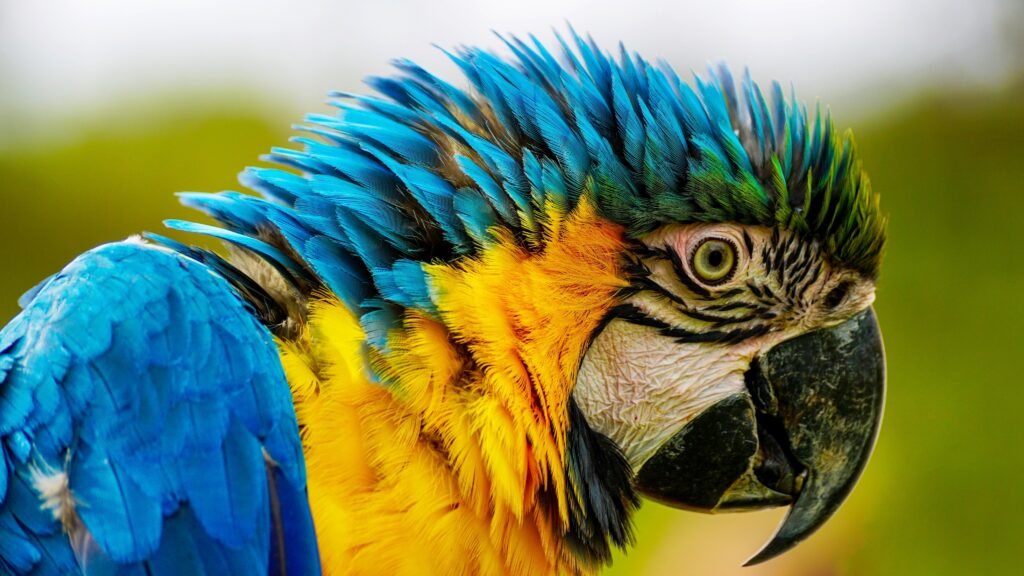How to care for a pet bird? Expert tips.
When you have limited space or funds and are searching for a pet companion that lives longer, a pet bird or a pair of them makes the best fit for you. Birds are social with humans, inexpensive to feed, long-live companions, and thrive in small living spaces. Compared to the four-legged pets that typically roam free and unattended in their owner’s home, the birds are relatively easy to care for. Let’s dive into an article about how to care for a pet bird.
Setting up a suitable habitat for birds
Cage size
Choose a cage width twice your bird’s wingspan to ensure short flight within the cage. The bigger, the better. Small cage sizes lead to behavioral changes in pet birds.
Bar spacing of the cage
Choose a cage with bar spacing that is not too wide or too small. The bird’s talons (hooked claws at the end of the toes) may tangle in small bar spacings, while the bird usually traps their head in larger ones. It is also essential because inappropriate bar spacing can injure your bird. So go with middle-sized bar spacing for your new family member.

Avoid circular cages.
Choose a rectangular cage for your pet bird to properly care for them. As circular cages are bad for the bird. There is hardly any space for the bird to fly and no corners to feel safe in. So go with a rectangular one.
Consider more space if you have more than one bird!!
Ensure that the space is more than adequate if housing more than one bird. Never house more than one bird in a small cage.
Set up perches in the cage
As birds love to spend most of their time on perches, consider setting up a few different perches at different heights. Set nests on opposite sides of the cage so the birds can fly and exercise. Wooden perches help “file” the bird’s beak and nails, be sure to scrub them thoroughly before use.

Place some old magazine papers on the bottom of the cage.
This makes cleaning much easier, and the papers can be disposed of quickly.
Place or hang the cage in a comfortable place.
- Keep bird cages indoors or in a room with frequent traffic. Birds are social animals and don’t like to be isolated in a room. However, there are some exceptions.
- To give your birds fresh daytime air, hang the cage near a window or under a porch. But don’t leave them unattended, and bring the pen back before evening to avoid the cool evening breeze.
- Avoid placing a cage in front of a window permanently. The enemy’s threat may generate nervousness in your birds. Putting a pen against a wall works well for the birds.
Best feed to care for a pet bird
Some birds are picky, while others have stringent dietary requirements. Ensure that you have the correct feed for the bird species you have, or it is better to talk with an avian veterinarian to see what type of food your breed of birds needs.
Bird pellets crumble or nuggets include healthy seeds, vegetables, fruits, and grains. So provide your bird with a balanced diet. Avoid seed mix; the birds pick out tasty seeds and leave the healthy ones behind. Serve your bird bite-sized cuts of fruits and vegetables like berries, oranges, and celery.

Bird’s Feeding time
You are feeding the bird regularly at about the same time each day. Better is to provide them according to their natural feeding time, approximately half an hour after sunrise and just before sunset. You can serve them small fruit and vegetable snacks to munch on during the day.
Note: Smaller birds with a higher metabolism need more frequent meals.
Give your bird a constant supply of fresh water.
As the metabolic rate of birds is very high compared to mammals. They can quickly dehydrate if they don’t have a constant fresh water supply. Choose a large shallow dish for water, and clean it daily.
Note: Place the water dish on the opposite side of the cage than the food tray to force your bird to move around to drink and eat.
Provide your birds with toys
Birds are brilliant animals, toys are essential to their mental fitness, and they enhance their mental and physical skill. Place one toy at a time in your bird’s cage and switch with another toy over someday to avoid boredom.
Some toys are used for holding, hanging, or chewing, while others provide good wear for the beak and nails. They can include beads, bells, nuts, or wood pieces filled with food, treats, or things to chew on.
Let your bird explore your house outside of its cage.
Most birds need outside-of-cage time. But first, check the safety of the rooms before allowing the bird to fly and explore the house outside of its cage. Make sure to supervise them and don’t leave them alone.
Socialize with Your Bird
If they seem nervous when you come to their cage, take a few minutes a day to sit by their habitat, talk to them, or spend time with them.

Give your bird’s attention!!!
Frequent attention will keep your bird from becoming bored or lonely. This will allow you and your bird to become more attached and result in a happy, healthy bird.
Find a vet to care for a pet bird
Before bringing new birds home, take them to a qualified vet for a checkup. Then afterward, take to the vet annually for a routine checkup if all is going well. However, if the birds seem ill, like eating less, feeling down, or their feet feel hot or cold, rush to the vet without delay. All of these signs signal an emergency.
Takeaway:
- Along with cleaning the cage daily, be sure to clean out the bird’s food and water dishes.
- If keeping different species of birds, you’ll need to be sure that the animals are compatible when placed together.
- Cover your bird’s cage at night to make the bird feel safe, secure, and warm. However, it actually can frighten some birds. So first, know your bird’s behavior.
Look into “howtothing.net” detailed pages about care for dogs, cats, hamsters, fish, and chickens to get more information.
